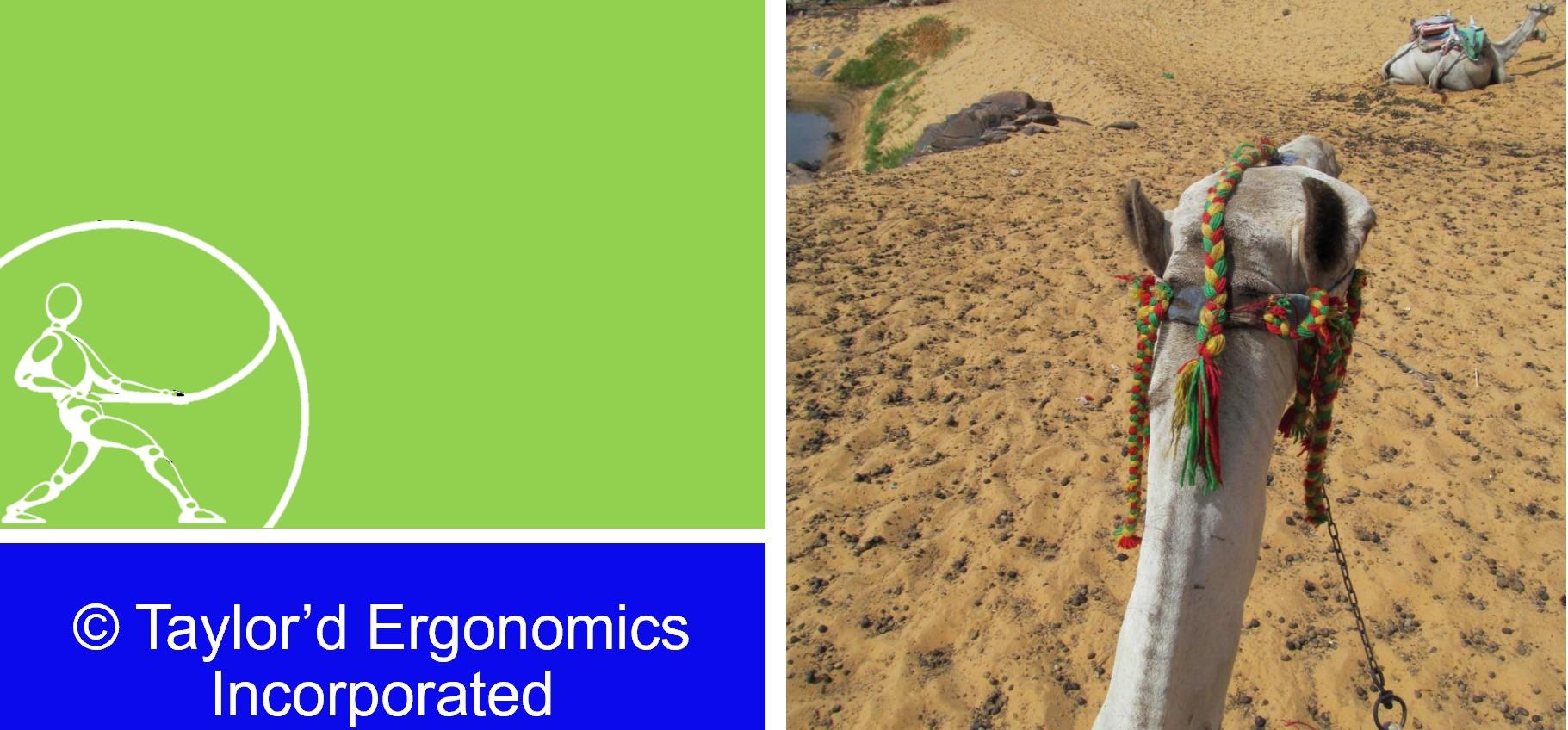Furthermore, how could I hurt my back lifting a sock? How could he have hurt his back lifting a pencil? We’ve been asked, in the past, to evaluate whether an injury could have occurred on a specific job. This often happens when an employer is struggling to see the link between a serious, costly injury, and the seemingly light task that “caused” it. We can evaluate the risk of a future injury; if the job requires a heavy lift, or a repetitive reach, then the likelihood of injury is high. But it’s difficult to look at injuries retrospectively. Why is that?
Thinking about straws and camels might generate a clearer image. The camel can carry bales of straw for years, but inevitably, if you keep strapping on more bales, at some point its back will fail. Similarly, the camel could carry smaller amounts of straw for miles and miles, but eventually, it reaches its tolerance and fails. That poor camel could haul tons of straw across the desert on its normal route, but if you change the route or the loading pattern in some way, the demands might change. The camel might not tolerate the same weight, going downhill or loaded off-center.
Humans are like camels. We’re pretty strong if we take care of ourselves and work within our capabilities. We can condition ourselves to handle more work if we choose to, but very few employers promote that approach. (And not without reason…it’s very difficult to affect what people do outside of work hours!) Our bodies will fail if we overload them, and by a single, heavy exertion, or a pile of straws over a longer period. And our conditioning is very task-specific, so odd tasks are not always tolerated well.
In a paperless world, pencils won’t be the root cause of many strain/sprain injuries. But the association between injuries and tasks will continue to mystify us occasionally. I believe this may happen when:
- The injury comes on gradually, over months or years. The employee can’t tell you exactly when discomfort became pain, because it has been simmering for a long, long time.
- The injury was caused by an unusual task that, although light, is quite different from what the employee does in the routine part of the job. When I transfer 9 kg boxes from floor to conveyor all day, I develop great tolerance for lifting 9 kg boxes. But if that’s the only exercise that I get in my day-to-day life, then my tolerance for other activities might be very low. For example, pushing sideways on a box that is jammed on the conveyor, even if that pushing effort is less than half of the box’s weight, could cause a strain injury, because I don’t have strength in that muscle group.
- The employee has become deconditioned, to a point where tasks that used to be easy now require almost maximum effort. Like many, I have neglected my fitness activities during the pandemic; when I start exercising again, what was easy in 2019 will be much too hard for me. Meanwhile, in this deconditioned state I’m at much higher risk of many types of injury.
- The load is “hidden”. When you bend over, your back muscles have to work surprisingly hard just to lift your upper body weight. Sometimes that’s all it takes; the pencil and sock are blameless.
The next time someone tells you they hurt their back by opening a drawer, bending to pick up a sock, or sleeping in an odd position, don’t be too quick to judge. That injury may have been a long time coming.
(Yes, I took the photo above, and no, I did not break the camel’s back.)


